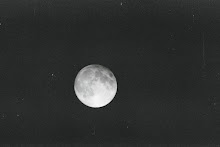


Upon departing El Socorro, we were held up for half and hour after being bogged down in a soft track, a few of the local guys hauling cobble stones off the beach noticed our struggles and came to help, shrub under the tyres and a little bit of Mexican muscle and the car was freed and we continued back out to the main road. 10 miles beyond Socorro, the road turns sharply inland, reaching a summit, from here the traveler is offered expansive views of the ocean and the dissected countryside to the northeast. From the mesa the highway drops into a wide valley and enters El Rosario and past the turn off for the Punta Baja continuing on to Punta Abrejoles. After leaving El Rosario highway 1 turns east and follows the wide, cultivated Arroyo del Rosario for a few miles, then crosses the valley and climbs into a region of low, deeply eroded hills. Soon cirio trees and giant cardon cacti appear alongside the highway, as the terrain begins to conform to the armchair traveler's notion of Baja California. With its blue skies, expansive views and abundance of unique vegetation, this is one of Northern America's most fascinating desert regions. After continuing southeast through the ranges of hills and wide valleys, the highway enters a spectacular landscape of large boulders interspersed with dense thickets of cirio, cardon and other varieties of desert vegetation. A quick stop for food and extra supplies in Catvina and we continue on highway 1. Driving for several hours over hot desert land, dazed and confused not knowing when we are going to ever see the ocean again. As our drinks are consumed the floor on the car begins to heat up. From Catavina, the highway continues to lead southeast through interesting rock strewn country. After crossing a narrow arroyo, the road climbs to a 2700-foot summit, then descends quickly to the edge of a dry lake, beyond here the landscape becomes more barren. Highway 1 now meanders through low hills, ascends a 2200-foot saddle and drops onto the basin of Laguna Chapala, a vast, desolate dry lake that becomes a sea of mud following heavy rains. After crossing another range of low, barren hills, the highway traverses a sandy plain to the junction with the road the Bahia de los Angeles. This region is a showcase for the typical vegetation of Baja California's central desert: ciro, cardon, cholla cactus, ocotillo, elephant trees and yucca valida. Reaching the Bahia de Los Angeles we could finally pin point ourselves on the map, soon realising we were only half way. Severally drained and mentally strained after being confronted by several narrow roads and passing semi trailers. For the first 15 miles after leaving the Bahia de los Angeles junction, highway 1 continues to cross level sandy plain. It then climbs into hilly country sparsely vegetated with cirio and elephant trees. Turning almost due south, the highway now descends gradually onto the windy Vizacino Desert, one of the most desolate portions of the entire peninsula. Only hearty yucca valida and scattered clumps of saltbrush interrupt the uniformity of the sandy landscape. Eventually reaching Guerro Negro by late afternoon. Abrejoles being only a short drive away. Through another of Baja's military checkpoints passing the Guerro Negro junction and highway 1 turns inland, heading in a south easterly direction across the barren Vizcaino Desert, vegetation is sparse here. 20 miles from San Ignacio, the road passes a group of flat topped volcanic cones; the dark reddish brown rocks in this region give further evidence of past volcanic activity. Finally after winding through low, cactus covered hills, the highway brings the traveler to the junction with the paved road to San Ignacio. After making a wrong turn we reach the turn off, one of Baja's only signed breaks, the road sign is covered in surf stickers, well this is a good sign we thought. The sun was setting and we realise we weren't going to make it before dark, however grateful we were on the right road. Driving in 5 mile stretches of straight paved road, with little or no vegetation, several mesa's in the distance makes for a beautiful sunset. Once the sun goes down the cows are by the road for warmth, a good reason not to drive at night. Cautiously negotiating the road before driving onto an open salt and sand flat before arriving in town. By now it is 8 o'clock and we haven't eaten much all day. Passing a road side fish taco stand and we decide to stop. The Mexican lady was out of fish so we opted for hot dogs instead. We asked her if she could point us in the direction for camping, pointing towards the point. We decide to wait till the morning to find the camping, instead we slept in a side street for the night, and we would rise early to find the break.

No comments:
Post a Comment